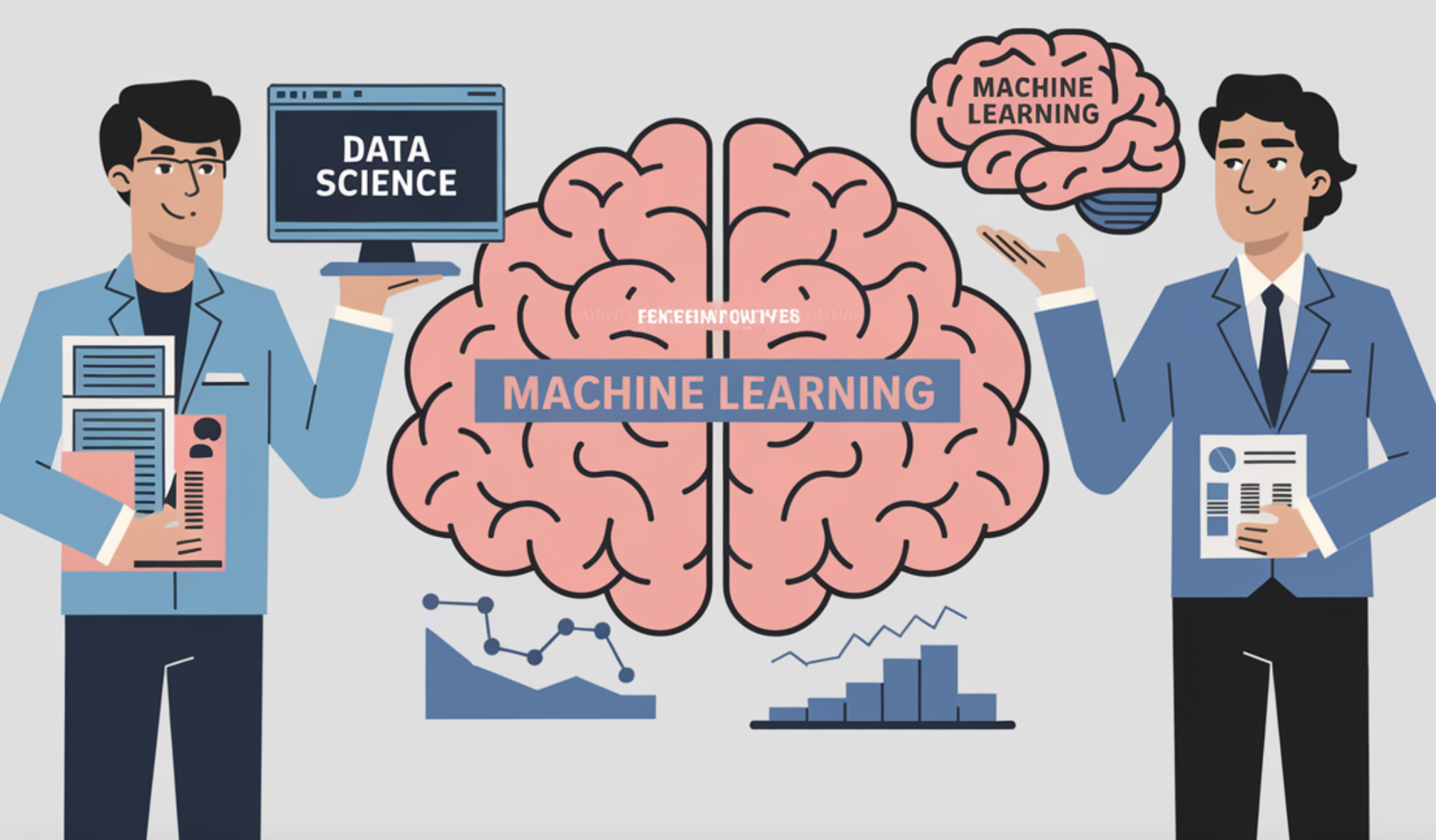
Understanding Data Science and Machine Learning
In today’s technology-driven environment, data science and machine learning are often confused but are actually different fields. This guide breaks down their differences, roles, and applications.
What is Data Science?
Data science is about extracting useful information from large amounts of data. It uses methods from statistics, mathematics, and computer science to analyze and interpret data. The goal is to support decision-making and improve business strategies.
Key Components of Data Science
- Data Collection: Gathering raw data from multiple sources.
- Data Cleaning: Making sure data is accurate and usable.
- Data Analysis: Finding trends through statistical methods.
- Data Visualization: Displaying results with charts and graphs.
- Predictive Modeling: Using data to forecast future scenarios.
Data scientists need skills in programming, statistics, and industry knowledge. They turn raw data into actionable insights for businesses.
What is Machine Learning?
Machine learning (ML) is a branch of artificial intelligence (AI) that develops algorithms capable of learning from data. Unlike traditional programming, ML models identify patterns in data to make predictions or decisions independently.
Types of Machine Learning
- Supervised Learning: Models learn from labeled data (e.g., detecting fraud).
- Unsupervised Learning: Models find patterns without labeled data (e.g., clustering).
- Reinforcement Learning: Models learn by interacting with the environment and receiving feedback.
Machine learning engineers design and train these models to ensure accuracy and scalability.
Key Differences Between Data Science and Machine Learning
1. Scope
Data Science: Covers data gathering, cleaning, preprocessing, analysis, and interpretation to provide insights and drive decisions.
Machine Learning: Specifically focuses on creating algorithms that learn from data to make predictions and decisions.
2. Roles and Responsibilities
Data Scientist: Analyzes data, visualizes findings, and provides business insights using statistical models and storytelling.
Machine Learning Engineer: Builds and optimizes ML models for deployment, ensuring they perform effectively in real-world applications.
3. Tools
Data Science Tools: Python (NumPy, pandas), R, SQL, Tableau, and Jupyter Notebooks.
Machine Learning Tools: TensorFlow, PyTorch, Keras, and Scikit-learn.
4. Purpose
Data Science: Aims to extract insights from data to support strategic decisions.
Machine Learning: Focuses on developing systems that can make autonomous predictions and improve over time.
Collaboration Between Data Science and Machine Learning
Machine learning is an essential tool within data science. Data scientists utilize ML algorithms to enhance predictive accuracy, while ML engineers ensure these models are effective for real-world applications.
Conclusion
Data science and machine learning are related but serve different functions. Data science is about understanding data and guiding decisions, while machine learning develops algorithms for autonomous learning. Together, they foster innovation and help organizations make better use of data.
Upcoming Event
RetrieveX – The GenAI Data Retrieval Conference on Oct 17, 2023
To evolve your business with AI, understand the differences between Data Science and Machine Learning to stay competitive. Here are practical steps to implement AI:
- Identify Automation Opportunities: Find customer interaction points that can benefit from AI.
- Define KPIs: Ensure AI projects have measurable impacts on business outcomes.
- Select an AI Solution: Choose tools that suit your needs and allow customization.
- Implement Gradually: Start small, gather data, and expand wisely.
For advice on AI KPI management, reach out at hello@itinai.com. For ongoing insights, follow us on Telegram or @itinaicom.
Discover how AI can transform your sales processes and customer engagement at itinai.com.


























